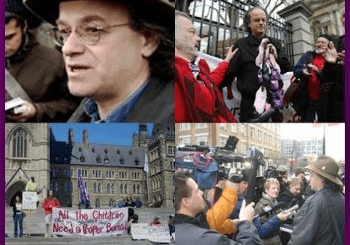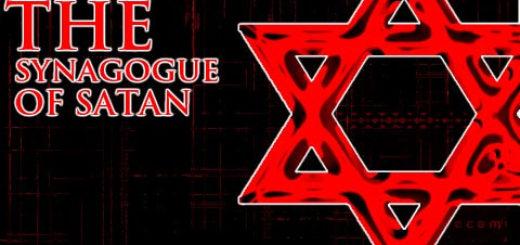EIR Daily Alert Service
|
TUESDAY, FEBRUARY 7, 2017 Volume 4, Number 26 EIR Daily Alert Service P.O. Box 17390, Washington, DC 20041-0390
EDITORIALJapan, China Offer America Critical Investments: New U.S. Economic Policy Needed Immediately!Feb. 6 (EIRNS)—American working people, and citizens generally, elected Donald Trump because their lives have been devastated by economic collapse in the era of “globalization,” which they cannot stand any longer. They need, again, the “American System,” going back to Alexander Hamilton’s vision of the leading manufacturing and inventing nation in the world. We now have a chance for that, if we act quickly. The panic-stricken Democratic Party, with some of its leaders calling for mass resistance against an election outcome they refuse to accept, has to wake up. Do they want a “color revolution” of groups funded by megaspeculator George Soros to overthrow the U.S. government—an “American Maidan” as in Ukraine? Free trade, environmentalist policies, and Wall Street bank bailouts have injured millions, just as badly under Obama and Hillary Clinton as under the Bushes. Constant “regime-change” wars by Bush and Obama have ruined countries and spread terrorism worldwide; and their ultimate target has been Putin’s Russia, which is ready for cooperation to defeat the terrorists. Recently, extraordinarily fortunate proposals have been made by government officials in Japan and China, to mobilize major investments to attack the worst problem in the American economy—its obsolete and broken infrastructure. A second meeting of President Trump with Japanese Prime Minister Shinzo Abe is scheduled this Friday, Feb. 10, accompanied by Cabinet-level meetings involving the President’s nominees for Commerce Secretary and Trade Representative. Nikkei Press Agency reported yesterday that up to nearly 5% of Japan’s $1.4 trillion national pension fund, the GPIF, could be invested, as Abe said Feb. 1: “I wish to discuss [Japanese] contributions toward improved productivity and competitiveness in the entire U.S. industrial sector, or a large framework that includes aid for infrastructure development.” In addition, reported Nikkei, “Long-term financing for high-speed rail projects in Texas and California would be provided through such avenues as the Japan Bank for International Cooperation.” At the same time, the CEO of China’s sovereign wealth funds, Mr. Ding Xuedong of the China Investment Corporation, has stated that those funds would like to convert their holdings of U.S. Treasury securities, estimated to be as much as $100 billion, into an “infrastructure build” in the United States. But the United States has no national bank or credit institution to organize such investments. It is unprepared to direct them away from speculators, and into high-technology infrastructure projects and scientific advances. And without restoring the Glass-Steagall Act, it cannot shut off the massive Wall Street speculation casinos which have crashed the economy. This sets a very short timetable for action. In order to seize these opportunities, U.S. economic policy has to be dramatically and rapidly changed from the “globalization and deindustrialization” era—as is necessary in any case. Reinstate Glass-Steagall. Establish a “Hamiltonian” national bank for infrastructure and manufacturing. Plan new high-technology platforms like a national high-speed rail grid, revitalized exploration of space, development of fusion and plasma technologies. These reflect Lyndon LaRouche’s “Four Laws To Save the Nation.” Some of these are President Trump’s promises, yet unacted on. A national mobilization to hold his feet to the fire on them, is the only sane thing to do. U.S. POLITICAL AND ECONOMICHouse Joint Resolution on Glass-Steagall Introduced in MarylandFeb. 6 (EIRNS)—A House Joint Resolution on Glass-Steagall was introduced in the Maryland Legislature today—HJ4, titled, “Reinstatement of the Separation of Commercial and Investment Banking Functions,” sponsored by Delegate Susan McComas, a Republican, who is a Deputy Minority Whip, with six other co-sponsors. The six co-sponsors include two Republicans and four Democrats, who represent a very diverse group. The Republicans are Rick Impallaria, who has been Chair of the Harford County delegation, and Pat McDonough, a prominent right-wing radio show host who ran for Congress against incumbent Dutch Ruppersberger. The Democrats include a Baltimore County Democrat, Jay Jalisi, who is a member of the Pacific Islanders Caucus; Mark Chang, the first Korean-American elected to the House of Delegates; Susie Proctor, a Maryland Education Association leader from Prince George’s County, and Ana Sol Guttierez, a prominent Hispanic-American. This represents the eighth state where a resolution for Glass-Steagall has been introduced into the state legislature in 2017. Memorials urging Congress to pass legislation enacting all of Lyndon LaRouche’s Four Laws to revive the U.S. economy have been introduced in Mississippi, New Mexico, South Carolina, and Washington State. Legislation urging Congress to pass Glass-Steagall (LaRouche’s Law #1), has been introduced in Virginia, Delaware (both House and Senate), Iowa, and the Washington State Senate (as a second resolution which memorializes Glass-Steagall as a stand-alone bill). Today, the introduction of HJ4 for Glass-Steagall makes the eighth state where the Memorials have been introduced. The Four Laws Memorials contain three additional pieces of legislation to follow Glass-Steagall: 2) The creation of a National Bank, as Alexander Hamilton did; 3) the issuance of public credit for building high-tech infrastructure, and 4) the funding of advanced technologies such as space exploration and fusion power to increase the economic productivity through science drivers. Economist: 1) Repeal the Act which Repealed Glass-Steagall; 2) Replace It with Glass-SteagallFeb. 6 (EIRNS)—In a Feb. 1 interview with Sharmini Peries of The Real News Network, Prof. William K. Black, Professor of Law and Economics at the University of Missouri, Kansas City, and former Litigation Director of the Federal Home Loan Bank Board, explained what Dodd-Frank should have been. And would have been, without Clinton-Obama opposition—the restoration of Glass-Steagall. Professor Black pointed to the top finance people whom the President has appointed, saying, “This supposed populist who ran against big banks, against Goldman Sachs, has of course, appointed all these top people in finance. That’s who he’s listening to, not small business people. And so he said that Dodd-Frank has been disastrous, which is hilarious—you know, bank profits are high; their capital levels are much higher…. And Mnuchin has said that he’s going to go after the Volcker Rule.” Black continued: “But, of course, this is an area where the New Democrats have neutered themselves because, if you recall, Hillary Clinton, supported by Paul Krugman said, ‘No, no, no. Don’t bring back Glass-Steagall.’ “Well, think how much shorter Dodd-Frank could have been if it had done intelligent things like the following: ‘The act repealing Glass-Steagall is hereby repealed. The interpretive rules as of 1965 are hereby reinstated 180 days after the effective date of this statute.’ That removes about 350 pages of statutes and about 2,000 pages of Volcker regulations and interpretations. And, ‘The Commodities Future Modernization Act is repealed’—that would have saved, again, 120 pages of statute, perhaps, and 600 pages of regulation.” Black said the 2008 crash occurred, “because Obama and the New Democrats lacked the courage to actually unwind the Clinton Era and Bush Era deregulation. And because they never created an understanding in the populace of what caused the crisis, which was these three epidemics of elite fraud—you could almost never hear the word ‘fraud’ even uttered by the President or Hillary Clinton, right?—there was nothing to push back against.” “So, you don’t have the population going, ‘Wait a minute, what [are] Trump and Mnuchin, you know, the Goldman folks, doing? They’re getting rid of the rules, that weren’t anywhere near as tough as the rules we had 60 years ago…. And you know, they’re going to produce the next crisis.” COLLAPSING WESTERN FINANCIAL SYSTEMMeaning of Another Article on Cross-Selling by Wall Street BanksFeb. 6 (EIRNS)—Bloomberg on Feb. 3 reports, “Cross-Selling Meets Private Banking at JP Morgan,” JPMorgan Chase Bank’s “private bank” division, which has the wealthiest customers, but is nonetheless part of the commercial bank’s Federally insured “retail banking.” Having interviewed seven former JPMorgan Chase bankers on practices the bank denies were of any significance, Bloomberg reports that even when Wells Fargo was trying to reach its “eight is great” goal, JPM was already there. It was cross-selling 7.9 investment products per retail banking customer household, per year, in 2012 and 2013. More recent figures were not available. The seven former private banker/salesmen said essentially that their jobs depended ultimately on selling clients JPMorgan Chase fee products—such as mutual funds, structured notes, private equity funds, etc.—or products of mutual fund groups and others which had contracts to pay JPM rich fees for each sale. Anything else was called “unqualified” irrespective of whether it brought a better return or was safer. And certainly, leaving a customer household with mere certificates of deposit, was unacceptable. This again—as in the Wells Fargo case of criminal fraud, but exposed as universal in the biggest banks in American Banker Jan. 27 (“Think the Wells Scandal Is Bad?”) is “post-Glass-Steagall banking.” JPM Chase lately has $1.3 trillion in deposits, of which only 60% are matched by loan assets—under $800 billion; the rest is in speculation, and these clients’ deposits become part of that as they are sold these securities and even derivatives products. Furthermore, many of these “products” are given FDIC insurance today. The other post-Glass-Steagall consequence is far greater Wall Street bank political and money power. When the mutual funds lobby sued Citibank in 1970 for starting to operate mutual funds, the result was the 1971 Camp v. Investment Company Institute Supreme Court decision. Camp reaffirmed Glass-Steagall as the nation’s primary banking regulation, as well as the intent of Congress to “protect commercial banks from themselves” in plunging their deposits into risky, high-profit speculations. At that time, different financial sectors had competing interests. But post-Glass-Steagall, JPMorgan Chase is itself the eighth-largest mutual fund group, and is full of private equity and hedge funds, etc. There are no longer competing interests in the financial sector. Thus the 10-12 Wall Street megabanks have extraordinary power, and through the Securities Industry Association and international lobbies, they bear down as one on Congress, President, and local elected officials. NEW WORLD ECONOMIC ORDERJames McGregor in Foreign Policy: How Trump Can Win With China, Using Alexander HamiltonWIESBADEN, Feb. 6 (EIRNS)—James McGregor, Greater China Chairman of consultancy APCO Worldwide, has proposed the U.S. work with China to define long-term economic and trade relations based on the U.S. traditions of Alexander Hamilton’s state intervention outlined in his 1791 Report to Congress. In his long Feb. 3 review of U.S.-China trade relations and disputes in Foreign Policy magazine, McGregor says that China used the same tools employed by Hamilton for its own progress: “protective tariffs, import bans, subsidies for encouraged industries, export bans on key raw materials, prizes and patents for inventions, the regulation of product standards, and the development of infrastructure for finance and transportation.” The Asia Tigers and Japan “followed this path” and “China got its start in 1994 with the ‘Outline for Industrial Policy’ that copied many of Japan’s protectionist policies…” He also compared the Chinese Communist Party and government control of the economy to that of FDR’s World War II War Production Board, where “The United States became the world’s largest centrally planned economy overnight.” McGregor proposes that Presidents Trump and Xi Jinping meet face-to-face in annual two-day summits, alternating between the two countries, where “reciprocity,” perhaps his answer to what Xi Jinping calls win-win, “should be the bedrock underlying trade and investment agreements….” McGregor wants a revival of TPP to deal with what he calls China’s “techno-nationalism” and alleged technology theft, but admits that China now wants “Made in China” to become “Made by China” with forced domestic innovation. The challenges of this focus, though, require foreign expertise, which leads McGregor to bring in Alexander Hamilton in the section headlined, “China Needs a Deal and So Does the United States.” He adds, “So we have no reason to demonize China. Perhaps we should even congratulate China on its masterful performance. The country has gone down a well-worn path.” How to make a deal? He writes: “China needs outward investment to gain the technology…. The United States needs to protect the country’s technology base and rebuild our industrial base. Both sides are focused on jobs.” McGregor wants Trump’s team to function as a tight, hard-nosed trio, based on Peter Navarro, head of Trump’s National Trade Council, whom McGregor calls a Breitbart-style “agitator” on trade policy; the law expert is Robert Lighthizer, Trump’s Trade Representative, quoting from him in 2010 when Lighthizer said, “U.S. policymakers significantly misjudged the incentives for Western businesses to shift their operations to China and serve the U.S. market from there,” and, with the government being passive to “Chinese mercantilism.” Third in the Trump Trade Trio is the “dealmaker” which McGregor assigns to Trump Commerce Secretary Wilbur Ross who flips and flops on China. McGregor makes little mention of the Belt and Road Initiative, and although recognizing Xi Jinping’s exceptional leadership efforts since 2012-13, he nonetheless fails to mention the universal implications of Xi’s “China Dream” and what that means for a needed U.S.-China “win-win” arrangement. McGregor concludes: China wants a “new model of great power relations.” “So let’s do that. The United States and China can have great power relations” based on reciprocity.” Who’s Driving a Wedge between Whom?Feb. 6 (EIRNS)—The Wall Street Journal today cited an unnamed “senior administration official,” claiming that the Trump Administration wants to drive a wedge between Russia and Iran. This drew an appropriate response by Russian Deputy Foreign Minister Sergey Ryabkov, who told Sputnik, “WSJ and many others engage in nothing other than seeking out causes for unfounded speculation, and attempt to poison the atmosphere in the relationship” between Russia and the United States, which is warming after eight years of Obama brinksmanship. From the standpoint of Russian-Iranian relations, Russian presidential spokesman Dmitry Peskov also denounced the story. “We do not agree with this approach,” Peskov said when asked whether the Kremlin agreed with the statement of President Donald Trump, who called Iran the “number-one terrorist state.” “You know that the Russian Federation has partner-like and good relations with Iran. We are cooperating on a number of issues; we value our relations in the trade and economic sphere, and look forward to their further development… It is no secret that positions of Moscow and Washington are diametrically different on a whole range of international and regional policies. This cannot and should not become an obstacle to the establishment of normal communications and pragmatic, mutually beneficial relations between Russia and the U.S States.” Ryabkov, for his part, said that Moscow regrets the latest sanctions the United States imposed on Iran after its latest missile test. “We regret that this happened,” Ryabkov told reporters, noting that the existing mechanism ensuring the peaceful nature of Iran’s nuclear program is being implemented without “specific problems.” Ryabkov pointed out that Iran’s missile test did not violate the Joint Comprehensive Plan of Action (JCPOA), or the UN Security Council resolution calling on Iran to refrain from nuclear-capable missile activity. “We have communicated this position to the U.S. side, too. We hope that the strict and accurate interpretation of the JCPOA provisions and the resolution will be important in determining Washington’s future course in this area,” he said. Since the sanctions include companies in China, the Chinese made a representation to the United States over the expansion of the sanctions. Foreign Ministry Spokesperson Lu Kang stressed that China remained opposed to any unilateral sanctions, especially those that affect a third country. STRATEGIC WAR DANGERWidening the Circle: Jordan Joins Russia, Turkey, and Iran Cease-Fire Talks in KazakhstanFeb. 6 (EIRNS)—Jordan has joined the Syrian cease-fire peace talks now taking place in Astana, Kazakhstan, which were initiated by Turkey, Russia, and Iran. According to TASS, the Jordanian representatives reported that Syrian opposition groups in Syria’s southern provinces are ready to join the cease-fire and join the fight against the Islamic State and Jabhat al-Nusra. Deputy chief of the Main Operations Directorate of the Russian General Staff Stanislav Gadzhimagomedov, who leads the Russian delegation to the talks, told reporters today: “During the talks, the Jordanian side came out with very interesting information about the situation in the south of Syria and the commitment of opposition groups acting in southern provinces to join cessation of hostilities, and their readiness to fight against international terrorist organizations, such as the Islamic State and Jabhat al-Nusra, which are acting in the south of Syria,” he said. “In general, both the Turkish and the Iranian sides, as well as representatives of the United Nations expressed readiness to continue work with the Jordanian side.” While all states in the region have been invited to join this process, Jordan has become the first Arab state, other than Syria, to join the talks. Otherwise General Gadzhimagomedov said Russia has prepared two documents. One is a protocol to the agreement which regulates ceasefire terms, liabilities of the sides on ensuring humanitarian access, exchange of forcibly kept people, and other details… We have drafted regulations on reconciled settlements and regions. We think this document will make it possible to swiftly stabilize the situation in blocked Syrian regions where the opposition has signed ceasefire agreements….” The documents require agreement both by the Syrian government and the opposition which could be finalized by the next meeting, he said. The next meeting of the joint task force on Syrian settlement comprising Russia, Iran, and Turkey will take place on Feb. 15-16, before the meeting in Geneva. Kiev Regime about To Go On the Offensive in the DonbassFeb. 6 (EIRNS)—The intensity of the fighting in the Donbass has declined somewhat in the past few days, but officials of the two breakaway republics are certain that the Kiev regime is preparing for an all-out offensive. Eduard Basurin, the military spokesman of the self-declared Donetsk People’s Republic, issued an emergency statement, yesterday, in which he reported that Ukrainian President Petro Poroshenko “has fallen into complete despair” following his phone call discussion with President Trump on Feb. 4, after which he realized that “Ukraine will in the near future cease to receive financial and military support for its terrorist operation in the land of Donbass.” As a result, Poroshenko “is ready to commit to the most reckless action, unleashing a full-scale and bloody war in Eastern Europe.” Basurin reported that Kiev has, in fact, started deploying additional troops of Ukraine’s Armed Forces and National Guard to the eastern Ukrainian regions, which could prove Ukraine’s preparations for a large-scale offensive against Donbass militias, as well as for sabotage activities against the civilian infrastructure in the region. In addition, D.P.R. reconnaissance data has identified Ukrainian army units, mixed with right-wing militia units, one led by the former head of the Right Sector Dmytro Yarosh, that have been deployed in the region. “These data make it possible to assume the Ukrainian army command is preparing for an offensive, including possible sabotage, along the entire line of engagement, and plotting acts of sabotage,” Basurin said. SCIENCE & INFRASTRUCTUREObama, Prince Charles Climate Hoax: Data Manipulation ExposedFeb. 6 (EIRNS)—In what it calls “Climategate II,” the Britain’s Daily Mail today published an exposé of data manipulation in preparation of the so-called “Pausebuster Paper,” which purported to erase the awkward “pause” in warming beginning in 1998, where temperatures did not conform to the computer models, refusing to show the rates of “warming” which the modelers desired. Climategate I, also by the Daily Mail, was the leaking of the e-mails (also showing data manipulation) of climate scientists at the Climatic Research Unit at the University of East Anglia. Dr. John Bates, a top scientist just retired from the National Oceanic and Atmospheric Administration (NOAA), has come forward with what the Daily Mail calls “irrefutable evidence” of manipulation, charging that lead author of the duplicitous paper, Thomas Karl, specifically chose unreliable data-sets for his “evidence,” to falsely indicate “maximized warming.” That paper, published in the June 2015 issue of Science, was heralded by Obama, Cameron and the British Greens in general, in the run-up to the UN Paris Climate summit later that year. The Mail says, “The sea data-set used by Thomas Karl and his colleagues—known as Extended Reconstructed Sea Surface Temperatures version 4, or ERSSTv4, tripled the warming trend over the sea during the years 2000-2014 from just 0.036°C per decade—as stated in version 3—to 0.099°C per decade. Individual measurements in some parts of the globe had increased by about 0.1°C, and this resulted in the dramatic increase of the overall global trend published by the Pausebuster paper. “ [emphasis added] Rep. Lamar Smith (R-TX) is currently investigating that specific NOAA paper from his Committee on Science, Space, and Technology. As Smith explained to the Daily Caller, “Dr. Bates’ revelations and NOAA’s obstruction certainly lend credence to what I’ve expected all along—that the Karl study used flawed data, was rushed to publication in an effort to support the President’s [Obama’s] climate change agenda, and ignored NOAA’s own standards for scientific study. |
|
|











